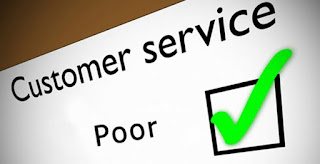When you're hiring salespeople, you're hiring the future of
your company. Here are qualities young start-up founders say they look for in
new sales hires.
We asked 13 founders from the Young Entrepreneur Council to
identify which single quality they feel guarantees a potential sales hire's
success--tenacity? Likability? ...Laziness? Some of their answers, below, might
surprise you.
1. A Hunter's Mentality
We want someone who is going to get excited about "the
big fish"--someone who will prepare endlessly and wade through a lot of
information, contacts and leads in order to put themselves in a position to
land as many big accounts as possible. That kind of drive pushes them to never
rest on their laurels and always look for the next big thing. --
2. Laziness!
I look for the laziest people I can find that have a history
of great sales. Amazing salespeople are lazy, and seem to be predisposed to
ADD. You basically just have to let them do their own thing and hope for the
best in combination with their ability to never take take no as an answer. Best
quick test: Tell them they didn't make the cut and if they argue with you,
you've got a winner.
3. The Discipline to Follow Up
I've found consistent follow-ups to be one of the most
valuable acts a salesperson can do. My team has gained many sales by having a
strategic follow-up strategy for our salespeople to follow. When they don't
follow it, I can usually tell about two months later. Other skills can be
learned through training, but follow-up is mostly about discipline.
4. Charisma
Any salesperson I'm considering hiring needs to have me--and
anyone else she meets while with me--eating out of the palm of her hand very
quickly. A salesperson can always learn about a new product, but it's much
harder to teach a person to get other people to like them. And if a salesperson
isn't likable, well, it's hard to make any sales.
5. Is He/She an Intelligent Fighter?
No matter what type of sales role you hire for, the one
common trait every salesperson needs is pure motivation. I look for an
intelligent fighter--someone who doesn't take no for an answer, who knows how
to be politely persistent, and who is quick on his or her feet. Without
motivation and a strong work ethic, no amount or training or high compensation
will make a person successful at selling.
6. The Trifecta: Intelligence, Personality and Drive
Unlike other roles within an organization where a single
specialized skill is good enough, great salespeople need to be intelligent,
personable and driven. This mix of personalities will ensure that they can not
only get themselves in front of buyers but also close the deal--and ultimately
create relationships that pay dividends over time.
7. Resilience
Rejection is a very real part of selling a product,
especially when focusing on cold leads. A great salesperson isn't easily
discouraged, and doesn't take the rejection on a personal level.
8. Empathy
Salespeople have to relate to the customer and support them
in choosing the right solutions, so personal empathy is an essential quality.
It shows up as listening more than talking, relating to the other people in
conversation and genuine care for others. The lifetime value of an ideal client
is much more important to us than the quick sale, so empathy from the sales
team is crucial.
9. I Don't Look for a Salesperson--I Look for a Consultant
I look for someone who sees his role not as a
"salesperson" who can sell ice to an Eskimo, but someone who
understands his role is more like a consultant's. He seeks to understand
prospects' unique problems to determine the best fit for their needs
10. Existing Relationships and Product Knowledge
Relationship selling starts with ability to build and manage
relationships. For a technology startup to sell software to an enterprise that
to some degree changes how people within a company collaborate requires relationship
selling at its best. I look for salespeople who can show an existing portfolio
of relationships, understand our product, and are able to articulate its value.
11. People Skills
A salesperson needs to have what my dad always called
"people skills." In short, that means he or she must be easy to
converse with, respectful, patient, and pick up on social hints. It sounds
simple, but I don't want a salesperson that can't listen. A typical salesman
will be a talker. I want a listener. I want someone who can connect the real
needs of a client to the solutions of our offers.
12. Tenacity
I test a salesperson
in every way possible before I hire them: I miss our scheduled phone call to
see what he does; I ask him to give a presentation and sell our product during
our interview; I email him and use an incorrect name to see how he responds; I
reject him to see how he responds to rejection. My goal is to find out if the
salesperson is truly tenacious and willing to close the deal.
13. Confidence with a Touch of Arrogance
Confidence with a touch of arrogance! The best salespeople I
have met are the ones who have great personality, are confident in what they do
and never let go of opportunities. They grab the leg and don't let go.



